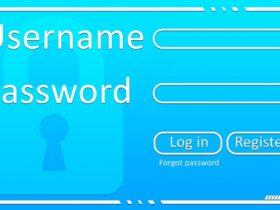In today’s digital age, email marketing is a robust tool for businesses to connect with their audience. However, managing email campaigns can be time-consuming and overwhelming without the right tools. This is where user-friendly autoresponders come into play. Autoresponders are a game-changer in simplifying email campaigns and ensuring effective communication with subscribers. This beginner’s guide will explore the world of beginner-friendly autoresponder tools, their work, and their importance in an email marketing strategy.
Understanding Autoresponders
Autoresponders is an automated email marketing tool that sends pre-written messages to your subscribers at predefined intervals or in response to specific actions or events. It allows you to consistently engage and interact with your audience without manually sending each email. They are designed to save time, increase efficiency, and provide a personalized experience to your subscribers.
Creating an Effective Autoresponder Campaign
- Define Your Goals: Defining your goals is important before creating your autoresponder campaign. Whether it’s driving sales, building brand awareness, or nurturing leads, clearly outline your objectives to tailor your autoresponder messages accordingly.
- Segment Your Audience: Segmenting your audience is crucial to maximizing the impact of your autoresponder campaign. Divide your subscribers into specific groups based on their demographics, interests, or engagement levels. By sending targeted messages to each segment, you can provide more relevant content and increase the chances of conversions.
- Craft Compelling Content: Content is king, even in autoresponder emails. Ensure your messages are engaging, concise, and relevant to your subscribers. Avoid repetitive sentences and make each email unique to maintain your audience’s interest. Consider incorporating visuals like images or videos to enhance your email’s appeal.
- Personalization is Key: One of the key benefits of autoresponders is the ability to personalize your emails. Use merge tags to dynamically insert the recipient’s name or other relevant information into the email. Personalization helps create a connection with your subscribers, aiding in more content engagement.
- Set Clear Call-to-Actions: Each autoresponder email should have a clear call-to-action (CTA). The CTA should be compelling and easily noticeable, encouraging readers to purchase, download a resource, or visit your website. Use actionable language and design your emails to direct the reader’s attention to the desired action.
Choosing the Right Autoresponder Tool
When selecting a beginner-friendly autoresponder tool, consider the following factors:
- User-Friendly Interface: Seek out a user-friendly tool that enables effortless creation and management of autoresponder campaigns. A drag-and-drop editor can simplify the process of designing visually appealing emails.
- Automation Features: Ensure the tool offers a wide range of automation features, such as trigger-based emails, time-based sequences, and behavioral tracking. These features will enable you to automate your campaigns effectively.
- Analytics and Reporting: Data is essential for optimizing your email campaigns. Choose an autoresponder tool that provides detailed analytics and reporting, including open rates, click-through rates, and conversion tracking. These insights will help refine your strategies and improve your results.
Conclusion
Autoresponders are valuable for simplifying email campaigns and delivering personalized messages to subscribers. You can create effective email marketing campaigns by understanding the fundamentals of autoresponders and following best practices. Remember to define your goals, segment your audience, craft compelling content, personalize your emails, and include clear call-to-actions. With the right autoresponder tool, you’ll be well on your way to achieving success with your email marketing efforts.




Leave a Review